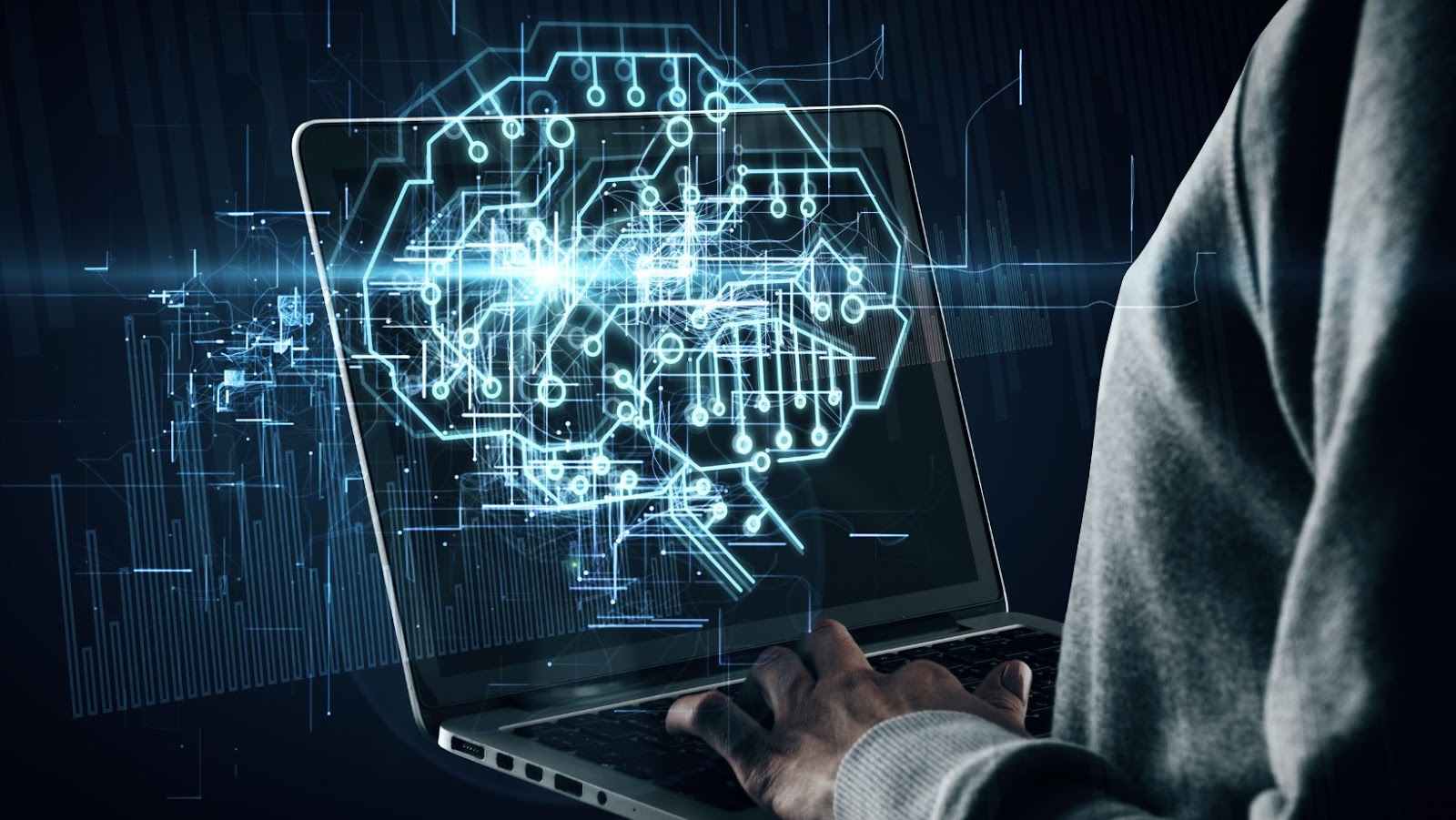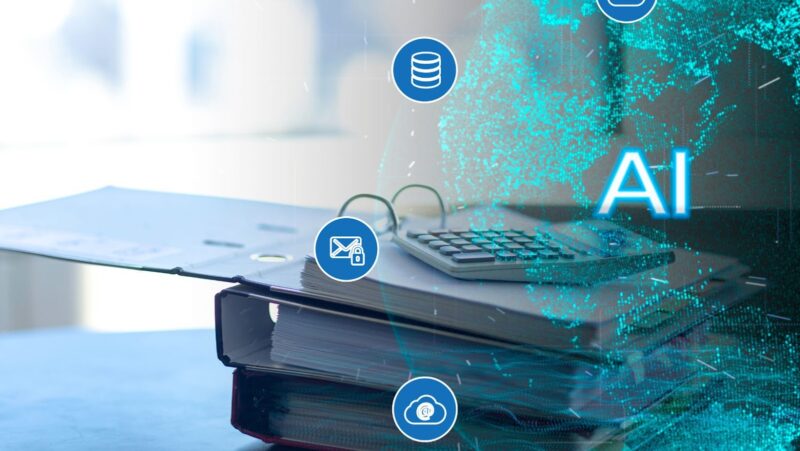
Artificial Intelligence (AI) is being developed rapidly and is poised to majorly impact the global economy. The advancements in AI technology have dramatically impacted industry, business, and the workforce, and nations now compete to be at the forefront of AI development.
This article will discuss the implications of AI on the global economy, focusing on the current AI race between the United States and China.
Is China Beating the U.S. to AI Supremacy?
Artificial intelligence (AI) is an area of computer science that emphasizes the creation of intelligent machines that work and react like humans. AI involves various fields such as Computer Science, Biology, Mathematics, Linguistics, and Psychology. It is often used to solve complex problems such as medical diagnosis , smart home systems, robotics , natural language processing , computer vision , expert systems, games and industrial automation.
AI technologies can be divided into two main categories: general AI (AGI or strong AI) and narrow AI (also known as weak AI). General AI involves machines programmed to have broad or general knowledge and the ability to apply it in varied contexts. Narrow AI focuses on machines designed to learn specific tasks; these tasks require targeted intelligence and cannot be generalized beyond those objectives. AGI aims to create autonomous agents capable of performing any task just like humans do;. At the same time, narrow AI focuses on a specific application or problem and works within limited parameters.
AI has profound implications for how economies work- from social data analysis for decision-making processes to a greater need for more technological infrastructure. As new tools become available via machine learning algorithms, businesses start making decisions faster than ever and more accurately than human labor can provide. Automation of manufacturing creates new opportunities while also displacing certain types of labor simultaneously – resulting in huge implications for urban planning worldwide. Moreover, advances in artificial intelligence create ethical concerns about inequalities arising from increased automation, the ownership & control of these technologies by big companies, who has access to their data & outcomes – among other issues which will shape much of our future policies on technological development around the world.
Overview of AI’s Impact on Global Economy
Artificial intelligence (AI) has increasingly made its mark on the global economy, introducing novel ideas and methods of operation to business, industry, and society. AI’s effects on global economic development are far-reaching and ever-evolving as technological advances continue. Artificial intelligence is transforming the structure and operational dynamics of both traditional industries and emerging markets, creating new opportunities for businesses to capitalize on, while at the same time presenting challenges concerning job displacement.
The two main impacts of AI on the global economy are its influence in reshaping production fundamentals by introducing factors such as automation and digital intelligence; secondly, its impact in enabling new markets by facilitating access to resources and creating more efficient marketplaces. With regards to production fundamentals automation is a major advancement brought about by artificial intelligence; manufacturing jobs have been automated since 1950s however newer technologies such as robotics promise to increase labor productivity even further allowing businesses to remain competitive in global markets. Additionally digital technology offers data driven process mapping which can be employed in customer profiling or inventory control enabling decision makers unlimited access to sophisticated analytics for informed decision making.
Although automation has increased productivity it has come at the costly expense of eliminating jobs across entire sectors ranging from transportation services to retail services; this shift highlights the need for examining job trends especially among skilled workers as they are now competing against machines or robots which often outpace them according their speeds of completion or accuracy levels making it difficult for industries worldwide that depend upon human labour to remain competitive against machines. This leads us onto the potential benefits presented through AI innovations used within marketplace infrastructure where technologies such Datamining offer advanced analytics capabilities allowing companies access into customer preferences leading them towards tailored manufacturing processes based upon accurate predictions resulting from data gathered from extensive research providing firms with an edge within their respective markets.
AI in the U.S.
AI profoundly impacts the global economy and the U.S. is no exception. In the race to become the leader in AI technology, the U.S. and China have been in a fierce competition.
In this article, we’ll explore the impact of AI on the U.S. economy and if China is beating the U.S. to AI supremacy.
Overview of AI in the U.S.
The United States is the leading market for artificial intelligence (AI). The country hosts the largest number of startups and has produced many billion-dollar unicorn firms creating AI-related products and services. According to professional services firm Deloitte, 83 percent of U.S. companies are formalizing their approach to AI, citing competitive pressure as the main driving force behind it. Moreover, around 45 percent of American companies use AI-based products in finance, customer service, production process optimization and product development.
At the same time, such potential has come with certain challenges — especially regarding jobs and ethics. Jobs related to operations that AI processes can automate are under threat due to robots replacing tasks previously completed by humans. As such, debates about robot taxes and universal basic income (UBI) have surfaced in the U.S., without a clear path forward yet on how these policies could be effectively implemented across different states or at federal level. Similarly, ethical issues surrounding biased decision-making from AI algorithms have become increasingly pressing for governments and corporations alike.
As companies continue their digital transformation journeys with the help of machine learning and other forms of artificial intelligence, governments will need to provide regulatory frameworks that ensure machine decisions adhere to certain ethical codes while incentivizing innovation at the same time — a complex balancing act which remains an area of active debate in 2019 in both domestic policy discussion forums such as think tanks as well as global ones like G20 gatherings or UN bodies alike.
Challenges Facing the U.S. in AI Development
The global AI market is expected to grow exponentially in the coming years, estimated to be valued at more than $5 billion by the end of 2020. The U.S. is the number one adopter and developer of artificial intelligence (AI), with many important players driving the development of this rapidly growing industry. Despite this strong foothold, the U.S. faces several formidable challenges in maintaining its AI development and implementation dominance.
One of these challenges is a lack of access to reliable data sets, which can be difficult and expensive to acquire in large quantities for training and testing AI algorithms, limiting R&D progress for some teams or companies particularly those with less resources. Another challenge includes a limited pool of qualified experts and engineers that are needed to support the industry’s growth, especially those with knowledge on developing complex algorithms and systems that can handle high volumes of data efficiently — a particularly challenging feat for firms operating with limited resources as there exists an increasing demand for competitive wages from qualified professionals.
Overcoming these two issues could lead to a better-developed domestic workforce that’s more capable in developing competitive solutions compared to other nations like China; allowing companies entering into AI industries access to larger amounts of data, as well as gaining an edge on research initiatives within the different areas where it can be applied such as healthcare, autonomous vehicles or cybersecurity.
AI in China
Artificial Intelligence is set to revolutionize the global economy in the coming years and China is leading the way with its aggressive investments in the field. From large tech conglomerates to small startups, China is rapidly advancing in AI technology and developing some of the most innovative solutions in the world.
This article will explore China’s place in the AI race and how it impacts the global economy, particularly about the United States.
Overview of AI in China
Since the start of the 21st century, China has experienced rapid development in the artificial intelligence (AI) industry, becoming a major player on the global stage. In 2018, China accounted for 22 percent of global AI-related patents and was second only to the United States in AI research output. In addition, it had invested more than US$7bn in AI during 2016–2018 according to MIT Technology Overview.
Today, AI is applied in various industries such as manufacturing, retail, automotive, healthcare and finance. Chinese tech corporations have developed IT solutions that are among the leading ones worldwide — facial recognition systems and e-commerce platforms like Alibaba or JD.com are just some examples. This supports massive amounts of data collection, which is an important tool for building powerful AI algorithms. Consequently, Chinese enterprises created a strong foundation for further development in this field and can be expected to further increase their share on the world market.
Furthermore, dedicated funds were set up to provide necessary resources for researchers who want to explore the possibilities offered by this new technology. For example, China’s Silicon Valley “Xiongan” founded an AI industrial fund worth ten billion yuan (around 1.4 billion US dollars) back in 2017 with cooperation from several institutions including didi Chuxing as one of its participants providing both capital and data support for startup projects identified by this organization. The ‘Driving forces’ behind this movement are numerous companies that regularly invest large amounts into various projects concerning innovative technologies like autonomous cars or computer vision solutions making them become commonplace resources within a relatively short period compared to what has been seen before within AIs development history environment at least on a global scale if not more specifically when it comes to China itself addressing its internal problems such as traffic management etc.

Challenges Facing China in AI Development
While AI has great potential to improve the Chinese economy, the country still has several challenges to overcome to ensure successful implementation. These challenges range from lack of data privacy protection and security standards to insufficient access to talent and resources.
Data Privacy: Data privacy concerns in China remain a major issue for AI development. The country lacks effective legal mechanisms for protecting personal information online and companies have largely failed in their attempts to promote voluntary data management practices. In particular, firms are prevented from complying with international standards such as the EU’s General Data Protection Regulation (GDPR), as these laws conflict with current laws governing data management in China.
Security: Cybersecurity threats posed by malicious actors are another risk for China’s AI industry. Cyber attackers can disrupt services, steal valuable intellectual property and personal information, damage hardware, and even interfere with the regular operation of sensitive systems. To mitigate these risks, Chinese authorities are working on comprehensive guidelines on cybersecurity governance; however, there is still much work to be done before they can adequately protect the country’s networks against sophisticated attacks.
Talent: There is also a need for more highly qualified professionals capable of developing cutting-edge AI solutions in China. Many global tech giants are poaching Chinese workers away from domestic companies with higher salaries and competitive benefits packages — this makes it difficult for local tech firms to retain experienced talent while they train new ones quickly enough.
Resources: In addition, there is limited access within China to technology resources such as computing power or knowledge repositories crucial for AI development. Unlike other countries that have invested heavily in big data infrastructure or conducted extensive research into new technologies, China does not have access yet to similar resources. Lastly, many AI applications require considerable investment into training and testing stages which may present an obstacle for companies attempting to develop experimental technologies due to cost constraints.
Comparison of AI Development in U.S. and China
The development of Artificial Intelligence (AI) is driving the global economy, particularly in the U.S. and China. These two countries are leading the pack regarding AI development and are vying to be crowned the AI superpower.
This article will look at the current AI development in both countries, and compare the strengths and weaknesses of their respective systems.
Comparison of AI Investment
The applications of AI have progressed substantially over the past decade and have had far-reaching effects on different economic sectors. In the last few years, both the United States and China have made significant investments in research and development of AI technology. As a result, these two countries are at the forefront of a global recognition of its potential and repercussions, creating an environment where artificial intelligence technologies continue to expand.
In terms of investment amounts, U.S. companies invested US$39 billion in 2018, while Chinese companies poured around US$45 billion into developing their AI landscape; collectively making up more than 80% of all the world’s investment in artificial intelligence overall. In addition, the two countries are competitively investing resources into training data scientists, collecting large datasets to strengthen machine learning algorithms and funding research projects to further develop new technologies based on AI applications.
However, despite having some shared strategies for attaining economic success with AI implementation each country has chosen different paths for advancing its respective societies through this evolving technology. For example, with regards to physical infrastructure as well as industry openness, U.S.-based businesses have invested significantly in IT and cloud computing platforms which have allowed them to launch scalable initiatives with minimal time investment whereas China is seeking financial gains from semi-open models that focus on regulated business challenges within certain industries such as healthcare or finance.
Initiatives within both countries seek to build trust between citizens and governments as well as provide transparency giving citizens a wider access to consumer rights across all businesses that use AI networks; something especially beneficial for Chinese consumers since it will decentralize corporate control outside of state intervention or corporate boundaries allowing individuals greater access than before with much more secure data protection procedures now implemented into Chinese lawmaking systems when using machine learning applications especially those related to consumer behavior analysis found online or within large industries like healthcare services.
Comparison of AI Research and Development
One of the most important aspects of any AI project is the research and development that goes into it. It is well known that the United States and China have been investing heavily in this area, pushing the boundaries of AI’s possible possibilities. This investment in research and development means that both countries can leverage their respective advantages to become worldwide leaders in this growing market.
The US has long been a leader in artificial intelligence research, with some of the world’s largest tech companies investing heavily in AI-driven technology. Companies like Google, Amazon, and Microsoft spend billions of dollars annually on AI-related projects. The US also has considerable resources dedicated to education, enabling more Americans to gain skills necessary for developing innovative solutions within key areas such as computer vision, natural language processing, robotics, machine learning algorithms (MLA), etc.
Meanwhile in China there has been significant investment into artificial intelligence by both public and private sectors. Chinese Internet giants Baidu, Alibaba and Tencent dominate many aspects of online life from shopping to banking and search engines to video streaming services – a great deal of this has been made possible due to advances made through AI-enabled technologies. Moreover these same companies are now heavily investing vast amounts of upstart companies (start-ups) focussing on artificial intelligence research or applications, giving rise to an ever-increasing number of creatives whose works further fuel an already vibrant scene that continues evolving despite being subject title monopolistic practices.
In conclusion it can be said that both the US & China currently have considerable investment into artificial intelligence development tied up not only within public sector initiatives but also making their way down through emerging start-up culture scene too – making each country rival forces with potential farther driving global innovation through AI over coming years too come.

Comparison of AI Talent
To properly measure the impact of AI on the global economy, it becomes necessary to compare and evaluate the talent available in the two largest players in this field: The United States and China. The comparison between these countries points out stark differences in their development approaches and potential impact on global markets.
The U.S. approach to artificial intelligence has been largely market driven. At the same time, China’s effort is being pursued by state initiatives influenced by a determined desire to be a leader in AI development. In terms of actual talent, both countries have impressive skills and capabilities with China enjoying a larger pool due to its greater population and higher rate of tertiary education enrollment.
The U.S.’s top performing institutions have created impressive expertise for governments, businesses and individuals along with large-scale projects such as Google’s AlphaGo initiative rooted in national data sharing protocols created for military applications for AI safety, security and effectiveness within defense corps planning processes. American research organisations have also developed innovative infrastructure such as TensorFlow2 which seeks to integrate predictive machine learning models to solve complex industrial problems such as illness detection from medical imaging or facial recognition software used by large companies such as Apple, Google or Microsoft.
China has responded by initiating several ambitious initiatives such as Baidu’s open-source ‘Go’ project aimed at increasing development speed through shared knowledge channels and resources while emphasizing their new standards allowing deeper collaboration between Chinese engineers, researchers, public/private sectors partners through larger scale R&D collaborations beginning with specific technological subfields like voice-recognition or autonomous vehicles which they are able to target quickly while navigating government approval process relatively easily comparing US counterparts often overburdened by complex bureaucracy or working on incremental solutions rather than disruptive ones like China is rapidly embracing across many industries ranging from e-commerce healthcare system developments providing great investment opportunities for venture capital firms openly collaborating with early stage startups backed up by quite capable technical expertise coming out from major universities present all around China amongst many others creating very competitive jobs markets for engineering degrees graduates often able hire before even stepping out from campus courtyards ground zero before business begins ramping up large scale projects which is already beginning transforming whole industry landscapes / small towns near/around major cities turning into high tech grounds employing massive workforce now filling newly renovated housing areas with main focus of economic activities soon becoming clearly centered around certain regions getting most benefit from all above mentioned together completing overall picture of what might look like brief overview of country comparison relating mainly towards AI development progress either US vs CHINA or vice versa it is one & only industry space everyone seems keep their eyes firmly fixed on during coming years without much chances anything else entering into competitors’ crosshairs anytime soon changing trajectory they are currently following making rapid progress through each unique & peculiarities any can find whenever looking deeper giving much bigger perspective construct further improving overall evaluation strategies being applied making sure positive outcomes remain most likely outcomes going forward throughout upcoming period when even more potential might be unlocked allowing climbing further up ladder towards higher levels where sky almost seems limit.
Conclusion
As AI technology continues to expand, it is clear that both the U.S. and China are putting forth significant effort to gain a competitive edge in the AI market. But, ultimately, both countries invest heavily in AI and it is difficult to determine who will come out on top.
In this concluding section, we will take a final look at the impact of AI on the global economy and the actions taken by both the U.S. and China to stay ahead of the competition.
Summary of AI’s Impact on Global Economy
The global economy is affected by artificial intelligence (AI) in various ways, ranging from its potential to impact entire industries and societal structures, to its more immediate effects on job growth and economic transformation. AI applications are now starting to impact how we produce goods and services and how we consume them. AI also affects macroeconomic variables including GDP, inflation, productivity and trade flows. Many industries, such as the mental health treatment industry, are still exploring how AI will affect market conditions.
AI technology can be used to optimize production processes, reduce costs, improve customer experience, personalize product offerings, enhance data security and develop new products faster. AI plays a major role in automation which could replace manual labor roles and challenge existing labor markets. The potential for AI-driven macroeconomic benefits is immense due to its ability to generate new value for sustained economic growth.
AI has wide-ranging implications for productivity gains across industries and could increase employment opportunities as it expands globally. Companies can take advantage of positive opportunities from integrating AI into their operations while others may need assistance with process integration or risk analysis. Policymakers must also consider the implications of transitioning their national economies into ones driven by digital technology like artificial intelligence systems. Ultimately, it is important for all those involved – corporations, policy makers, labor markets – to think proactively to identify where the opportunities lie and how best they can be taken advantage of to bring about positive economic outcomes both now and in the future.
Is China Beating the U.S. to AI Supremacy?
Despite the growing erosion of technology’s relative economic impact in the United States and other developed countries, Chinese researchers continue focusing heavily on accelerated and vast AI advancements. In comparison, the U.S., other G7 nations, and even tech-savvy BRIC countries have started to lag in artificial intelligence-related investments and development cycles.
China has had a clear lead in recent years due largely to an impressive human resources backbone, significant government investment in research and development initiatives, and a laser-focus on creating innovative new products for global markets such as autonomous vehicles and tech powered healthcare solutions at scale. Moreover, Chinese researchers are making strides in emerging areas such as edge computing, quantum computing, natural language processing (NLP) based chatbots, internet of things (IoT), facial recognition/biometric security systems. Overseas countries can’t ignore this progress or risk being left behind; they must take action to remain competitive and keep up with China’s growing technological advantage.
The race towards AI supremacy is truly intensifying globally. Still, China seems to be pulling away from everyone else – certainly regarding the commercial potential of artificial intelligence technology moving forward. As competition begins to heat up even further with AI, companies worldwide all look set to benefit from the immense opportunities that come with incorporating artificial intelligence into their operations.



